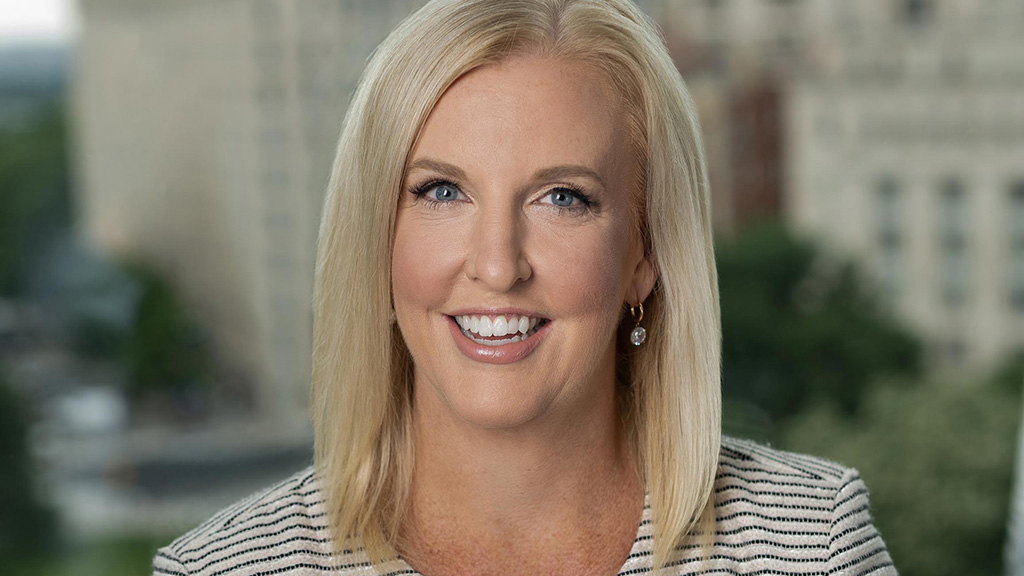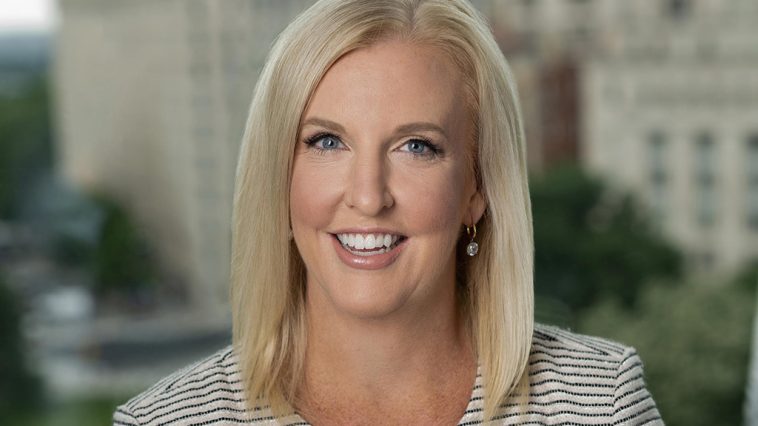
Abigail Ross Hopper’s Departure: A Defining Moment for the US Solar Industry
The announcement that Abigail Ross Hopper will step down as president and CEO of the Solar Energy Industries Association (SEIA) has sparked considerable discussion in the renewable energy community. Hopper’s nearly nine-year tenure at the helm of the nation’s leading trade organization for solar and storage comes at a time when the solar industry is facing a host of tricky parts, tangled issues, and unpredictable twists and turns. In this opinion editorial, we take a closer look at what this leadership transition means for the US solar sector, the political and economic challenges it faces, and how the industry might steer through these nerve-racking times.
During her time as CEO, Hopper has often been hailed as a champion for renewable energy. Her open letter announcing her departure—effective at the end of January next year—reflected both a sense of personal accomplishment and optimism for the industry’s future despite the confusing bits and off-putting obstacles the solar field has encountered. This editorial will dig into the layered issues, poke around the hidden complexities of the current political and economic landscape, and offer perspectives on managing your way through a period of significant change.
US Solar Industry Executive Search Stirs Curiosity and Debate
With Hopper’s exit, the SEIA board of directors has initiated an executive search process for a new leader. This move has set off debates among industry analysts, policy experts, and stakeholders about what kind of leader is needed at a time when the renewable energy landscape is loaded with issues and replete with challenging political dynamics.
The next CEO will inherit a position that is both essential and fraught with tricky parts. Among these is the need to figure a path through politically induced obstacles and regulatory challenges, as well as to manage the subtle details that can make or break industry initiatives. The search is seen by many as more than just a managerial replacement—it is a signal of the industry’s readiness to tackle the nerve-racking, off-putting challenges that have dominated the solar energy debate over the past few years.
Key characteristics for the ideal candidate include a deep understanding of renewable energy, the ability to get into the fine points of policy implementation, and a vision that aligns with both industry growth and sustainability. As industry experts pore over the subtle parts of the emerging candidate profiles, there is optimism that the next leader could expand the organization’s influence far beyond its traditional roles.
Political Landscape and Its Impact on Renewable Energy Growth
The timing of Hopper’s departure could not be more significant. The US solar industry has recently been caught in the crossfire of political shifts, with contrasting approaches from different presidential administrations shaping the environment in which renewables now operate. While Hopper once capitalized on the support provided by the Biden administration, her successor will face a market that is still reeling from the controversial policies instituted under the previous Trump-led government.
This politically tense environment has made the solar energy field a battleground for policy debates. Here are some of the key political factors currently at play:
- A shift in regulatory policies that has muddied the waters for renewable energy investments.
- An ongoing debate about the reliability of solar energy, where critics attempt to paint it as inconsistent.
- Fiscal policies that have significant implications for both small businesses and large manufacturers within the energy sectors.
When examining these factors, it becomes clear that the political arena remains one of the most intimidating and overwhelming challenges for industry leaders. Both seasoned experts and emerging voices in the solar field agree that the current landscape is full of problems and tense debates, making it critical for the next CEO to figure a path that reconciles political realities with innovative renewable strategies.
Analyzing the Leadership Transition in the US Solar Sector
Abigail Ross Hopper’s resignation marks the close of a key chapter in the history of US solar energy. Under her leadership, SEIA grew significantly, both in influence and in its ability to drive policy discussions on renewable energy. Her legacy is one that is defined by both groundbreaking achievements and the ability to steer a community through the nitty-gritty of industry challenges.
The decision to step down came in her own words—a moment to embrace her next chapter. However, beneath that statement lies a deeper commentary on the distracted focus within the renewable energy field. As the industry contemplates its future, several important topics have emerged that deserve a closer look:
- Strategic Vision: Hopper was known for her ability to get into the hidden complexities of policy and innovation. Future leaders will need to adopt a similarly forward-thinking mindset that can merge tradition with transformative progress.
- Policy Resilience: The next leader must be prepared to work through the politically charged, nerve-racking issues that come with the territory. The policies of past administrations, both supportive and undermining, offer a reservoir of lessons from which to learn.
- Stakeholder Engagement: Engaging multiple stakeholders—from small business owners to major industrial players—is key. This multifaceted interaction will be critical in patching together solutions that respond to the industry’s varying needs.
These elements underscore the importance of leadership that balances the industry’s growth objectives with a keen eye on the twisted parts of the political landscape. The outgoing CEO’s departure leaves big shoes to fill, and the search for a successor is as much about finding the right person as it is about re-establishing confidence in the industry itself.
Challenging Aspects of the Renewable Energy Industry
The renewable energy sector, and solar energy in particular, is experiencing a period wherein both natural evolution and policy backlash play major roles. While innovation continues to drive the push toward a cleaner energy future, the industry is simultaneously wrestling with a host of intimidating challenges. These include:
- Regulatory Changes: Shifting guidelines and rules have created a maze of confusing bits that many in the industry find hard to untangle.
- Investment Risks: Many investors remain wary of the twisted issues that arise from political shifts and unexpected policy reversals.
- Market Volatility: With fluctuations in energy prices and uncertainties regarding governmental support, solar energy companies often have to sort out both financial and operational disruptions.
These hurdles are far from trivial—they represent some of the most complicated pieces in the broader energy equation. However, it is precisely during these trying times that new, innovative strategies have a chance to emerge. Industry leaders and policy influencers are now tasked with not only addressing these challenges but also with capitalizing on opportunities that lie hidden beneath the surface of regulatory complexity.
For instance, many small businesses involved in solar panel manufacturing or installation are grappling with the demands of a shifting market. The very nature of their day-to-day operations is affected by the subtle parts of policy changes that can either bolster their growth or leave them scrambling for resources. By understanding the off-putting and intimidating challenges that even the most experienced professionals face, the industry can set itself up for a future where adaptability and resilience are prized above all.
Intersections Between Solar Energy, Industrial Manufacturing, and Electric Vehicles
The current leadership change in the solar sector is just one piece of a larger puzzle that connects renewable energy with industrial manufacturing and the rapidly growing electric vehicle (EV) market. These sectors are increasingly intertwined, forming a synergy that has the potential to reshape the American economy.
Several factors underscore this interconnectivity:
- Industrial Manufacturing: Manufacturing facilities, especially those producing parts for energy systems and EV components, are directly impacted by energy policies. A new leader in the solar industry could drive changes in supply chain management and production strategies.
- Electric Vehicles: The EV revolution relies heavily on sustainable energy inputs. As more electric vehicles hit the road, the pressure mounts on solar energy producers to meet increased energy demands while maintaining cost efficiency.
- Small Business Influence: Numerous small entities play a pivotal role in both the solar and EV industries. Their agility and innovative approaches make them valuable allies in advancing a more sustainable future.
The intertwined nature of these sectors offers new avenues for collaboration. For instance, joint ventures between solar energy firms and EV manufacturers could unlock transformative advancements in energy storage and distribution. Additionally, industrial manufacturers may find opportunities to retool operations in order to support a cleaner energy grid—a process that could stimulate local economies and create new job opportunities.
A table below illustrates the overlapping interests between these industries and highlights potential areas of collaboration:
| Sector | Key Interests | Potential Collaborative Opportunities |
|---|---|---|
| Solar Energy | Grid integration, policy advocacy, technological innovation | Joint R&D projects with EV manufacturers and industrial firms |
| Industrial Manufacturing | Production efficiency, sustainable materials, supply chain resilience | Investment in renewable technology production facilities |
| Electric Vehicles | Battery efficiency, charging infrastructure, emissions reduction | Partnerships with solar firms for integrated energy solutions |
This cross-sector collaboration is essential, not only for driving technological innovation but also for mitigating the off-putting impacts of the politically and economically tricky bits that have historically rattled each industry. With the right leadership, the renewable energy community could effectively make its way through these challenges, ensuring that both the solar and EV industries continue to thrive in a competitive market.
Strategies for Tackling Hidden Complexities in Renewable Policies
The launch of an executive search for a new leader at SEIA highlights the need for a fresh approach to managing the subtle parts of renewable energy policy. Here are some proactive strategies that policymakers and industry executives need to consider:
- Dive into Policy Reforms: Stakeholders should work together to propose and implement policy changes that address not only the obvious challenges but also the confusing bits that arise from outdated regulations.
- Boost Industry Research: Increased investment in research and development can help uncover innovative solutions to the various tangled issues, such as energy storage and grid modernization.
- Foster Public-Private Partnerships: Building strong alliances between government entities and private companies can pave the way for pilot projects and trials that mitigate the nerve-racking risks linked with transitional policies.
- Educate the Consumer Base: Efforts to spread awareness about the merits and potential pitfalls of solar energy can help foster an environment where the technology is understood, appreciated, and trusted.
These strategies offer the detailed roadmap essential for making your way through today’s politically and economically challenging landscape. They also highlight a crucial need for leaders who not only appreciate the fine shades and little twists of the industry’s hidden complexities but also have the capacity to innovate and drive change. It is this capacity that many hope the next CEO of SEIA will embody.
Furthermore, creating task forces that bring together diverse expertise—from policy experts and entrepreneurs to manufacturing specialists and academic researchers—can serve as the backbone of a robust strategy to overcome the overwhelming challenges ahead.
Comparing Policy Approaches: Past and Present Administrations
One of the most significant external factors influencing the solar industry has been the stark contrast between the renewable energy policies of past and present administrations. To better understand the current landscape, it is useful to compare key policy differences in table format:
| Policy Aspect | Previous Administration Approach | Current Administration Approach |
|---|---|---|
| Regulatory Support | Undermined solar energy reliability with mixed messages | Focused on promoting sustainable energy and providing clear guidelines |
| Investment Climate | Faced significant investor hesitation due to unstable policies | Aimed at creating a more predictable environment for renewable investments |
| Tax Incentives | Few or no incentives for renewable energy projects | Expanded tax credits and other financial benefits for green initiatives |
| Industry Collaboration | Less supportive of public-private partnerships in energy sectors | Encouraged cooperation among government, industry, and academic institutions |
This table helps clarify the subtle differences and fine shades between the two approaches. Although the previous administration was criticized for painting solar energy as unreliable—a view that contributed to a tense and politically charged environment—the current leadership appears to be more committed to fostering sustainable growth. However, despite these improvements, the industry continues to grapple with many of the same overwhelming challenges that have characterized the sector during transitions.
Looking Forward: A New Era of Innovation and Collaboration
Despite the nerve-racking and off-putting challenges facing the solar energy sector, there is reason for cautious optimism. Abigail Ross Hopper’s tenure may now be drawing to a close, but the foundation she helped build continues to support an industry on the cusp of transformative change. As stakeholders across the renewable energy spectrum brace for the upcoming leadership transition, several promising trends are emerging:
- Technological Breakthroughs: Advances in solar panel efficiency, battery storage solutions, and integrated grid management systems are paving the way for more robust and reliable renewable energy infrastructures.
- Collaborative Innovation: Increasingly, businesses within the renewable energy, industrial manufacturing, and electric vehicle sectors are exploring ways to work together. Such collaborative ventures could lead to groundbreaking improvements that benefit all parties involved.
- Consumer Engagement: With a greater focus on educating end users about the benefits of renewable energy, both small business owners and individual consumers are becoming more active proponents of sustainability.
- Resilient Leadership: The search for a new SEIA leader is not just a routine change in management—it represents an opportunity to bring in fresh ideas and strategic thinking that can help the industry work through its current tangled issues.
In many ways, the upcoming change in leadership is a call to action—a chance for the industry to assess its priorities and re-engage with a public that is increasingly aware of the necessity for sustainable energy practices. While the transition period may be marked by the intimidating twists and turns intrinsic to any major organizational change, it also promises the possibility of reinvigorated industry dynamics and renewed policy focus.
For those in the renewable energy field, the journey ahead requires a balanced mix of realism and optimism. On the one hand, the industry must contend with tangled issues, complicated pieces of the regulatory framework, and a politically charged environment. On the other hand, there is an immense opportunity for progress as new technologies emerge, public confidence grows, and collaborative efforts gain momentum.
Final Thoughts: Embracing Change in Uncertain Times
The announcement of Abigail Ross Hopper’s resignation is a landmark moment for the US solar industry. Her departure not only symbolizes the end of an era but also sets the stage for transformative change. The next chapter in this narrative will be defined by how effectively the industry can sort out the subtle details and little twists of public policy and market dynamics, while also steering through politically loaded challenges and economic uncertainties.
In the coming months, the focus will be on finding a leader who possesses both the visionary insight and the practical know-how to figure a path through the overwhelming obstacles that have long characterized the renewable energy sector. The ideal candidate will be someone capable of managing your way through the complicated pieces of national policy and harnessing the power of innovation to drive sustainable growth across all interconnected sectors.
As we watch this unfolding transition, it is essential to acknowledge that change, while sometimes intimidating and nerve-racking, also brings opportunities for reinvention and progress. The solar energy industry has always been at the forefront of a revolution that seeks to challenge traditional energy paradigms. With a fresh new leader, the industry could emerge even stronger, uniting the interests of industrial manufacturing, electric vehicles, and small business alike.
In conclusion, the leadership transition at SEIA is a moment of both reflection and anticipation. It calls on all industry participants—be it at the policymaking level, within small and medium enterprises, or in the arena of technological innovation—to embrace the call for change. By working through the tangled issues of regulatory frameworks, political pressures, and market uncertainties, the US solar industry is poised to flourish under a renewed vision that prioritizes sustainable energy and broad-based collaboration.
As we digest the news of Hopper’s departure and look forward to the vital decisions ahead, we must remain committed to supporting an energy infrastructure that is resilient, adaptive, and innovative. Ultimately, it is through this blend of experience, forward-thinking, and effective stakeholder engagement that the solar energy sector—and by extension, the entire renewable energy ecosystem—will truly power the future.
Originally Post From https://subscriber.politicopro.com/article/2025/10/abigail-ross-hopper-to-step-down-as-head-of-us-solar-group-00616101
Read more about this topic at
Solar Energy Industries Association President and CEO to …
The solar industry’s top advocate stepping down


